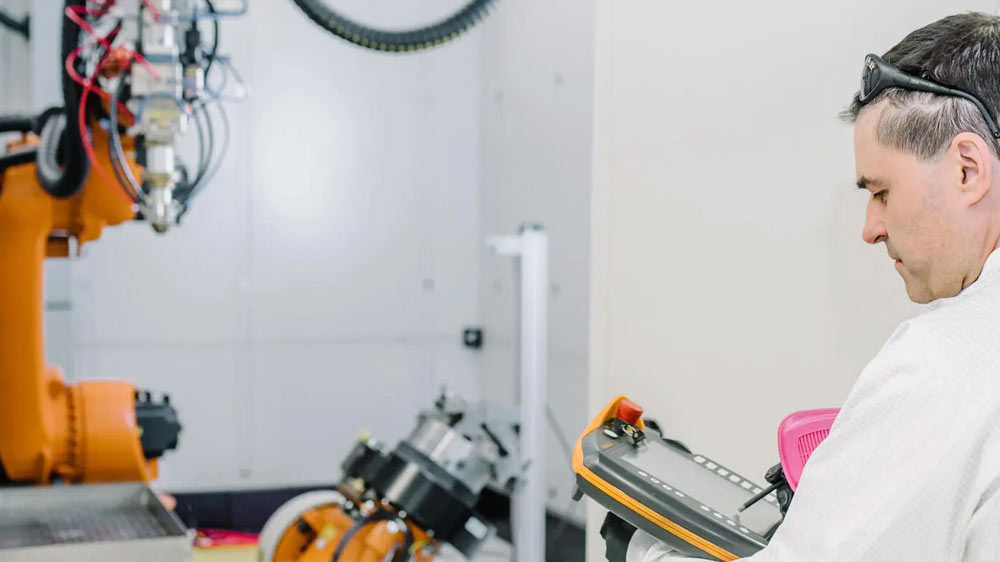It is absolutely essential for medical device makers to maintain traceability and document compliance throughout production. In the United States, for example, the FDA requires manufacturers to compile all the drawings, specifications, and procedures needed to produce and inspect a medical device into a single Device Master Record (DMR). The European Union and many other individual countries have similar regulations.
Given the necessity for such detailed recordkeeping, it is surprising that 80% of US medical device producers still maintain their DMRs primarily in the form of paper documents. As a result, most of their critical data – from bills of materials all the way through to final inspection criteria – remains vulnerable to human error and the inherent inefficiencies of manual recording processes.
Needless to say, the benefits of moving from manual to automated digital documentation systems are obvious to nearly every manufacturer. So why haven’t they already eliminated their paper trail?
Barriers to Standardization
The barrier to greater automation isn’t a lack of interest. Rather, various historical factors make the process of fully digitizing their operations quite complex for medical device manufacturers, both large and small.
Unlike industries that adopted common standards early on, medical device manufacturing has developed in a decentralized, site-specific way. Even within a single company, different facilities often have their own unique manufacturing systems, IT infrastructure, and production workflows. These systems were each built to meet local needs, sometimes years or even decades ago, and are often tied to site-specific validation and compliance processes.
This has led to a landscape where no two manufacturing execution system (MES) implementations are exactly alike. Adding new equipment or automating recordkeeping typically requires a custom engineering effort at each site. That adds time, cost, and complexity to every deployment.
This stands in sharp contrast to the semiconductor industry, which standardized on the SECS/GEM protocol decades ago driven by strong central leadership from SEMI. The semiconductor industry also has a relatively limited number of large players.
Medical device manufacturing has never had that kind of cohesion. Regulatory requirements vary by region, product types span a wide range of complexities, and many companies (especially in Europe) are smaller firms with proprietary systems. And once a company has cleared all the hurdles to validate a process for regulatory approval, there’s little appetite to start over from scratch.
As a result, the industry never converged on a universal communication standard. That’s starting to change with some manufacturers beginning to align around OPC UA (Open Platform Communications Unified Architecture). This is a flexible industrial protocol that supports modern IoT connectivity. But widespread adoption will take time, especially when older systems are embedded and validated.
This lack of standardization means integrating new documentation processes into factory systems can still take weeks or months. Faced with those hurdles, plus the perception that digital transformation is a heavy lift, many manufacturers continue to rely on paper-based systems they know and trust.
Identifying Integration Requirements
What’s required to overcome this barrier? The first step is to develop a clear vision of the desired outcome.
It’s important to realize that eliminating the paper trail means more than simply digitizing existing documents. Scanning records into PDFs or entering data into spreadsheets may reduce physical clutter, but it does little to enhance accuracy, traceability, or real-time access to information.
The key to automating DMR recordkeeping is to have all production equipment communicating effectively with the systems that manage manufacturing data. Specifically, this means the MES, which constitutes the “brain” of any factory automation system. The MES stores data and actively manages and coordinates manufacturing processes: tracking materials, logging equipment data, verifying operator actions, and storing results for later recall or audit.
Accomplishing this involves capturing data at the machine level – part identifiers, process parameters, operator actions—and then automatically sending it to the MES in a format it understands. In a perfect setup, this data is transmitted in real time, with minimal operator input, and is fully traceable for compliance and audit purposes.
System Components
To develop a system that will perform all these functions, manufacturers need to first clearly define two elements: how their equipment will gather and format process data and how that data will be exchanged with their MES or factory control system.
In practice, the systems that implement these two functions must operate in close coordination. That means more than just defining data formats; it involves determining how events are triggered, how errors are handled, how operator actions are verified, and how workflows are aligned with the MES’s logic.
Facilities using OPC UA or other standardized protocols will have a head start because the data exchange piece of the solution is already defined.
But many legacy systems rely on proprietary APIs or custom software. Integrating with these environments often requires custom interface applications. Each of these must be designed, tested, and validated before deployment.
This adds time and cost, especially when adapting systems across multiple sites. But there’s no avoiding the need to match the integration layer to the site’s existing infrastructure.
It’s also important to remember that for medical device manufacturers, this integration also has regulatory requirements. FDA guidelines require that software systems used in production undergo both verification (to confirm the system was built correctly) and validation (to confirm it meets production needs).
The verification and validation steps must be documented and auditable, and they can’t be skipped or rushed. For teams building in-house solutions, this means creating both code and the infrastructure to simulate, test, and validate it.
Our Approach
This can all seem like a rather daunting task – and, in fact, it often is. It is understandable that many manufacturers hesitate to undertake it. Or, conversely, underestimate the size of the effort required when they first begin.
Because of all this, sometimes the best solution is to let specialists handle it. IPG Photonics has been providing automation systems to medical device manufacturers for decades. Based on that experience, we’ve developed a modular platform for automating documentation. Our approach is effective because it reduces time to deployment, minimizes client engineering overhead, and streamlines regulatory approval.
The IPG platform consists of two components.
IPGCore: this is our equipment-side controller, which manages the entire production cycle from barcode scanning and material changes to part processing and error handling.
Ignition: this is an OPC UA server that communicates with IPGCore (an OPC UA client). and interfaces with the MES. It manages authentication, workflow triggers, and communication with the factory system.
This architecture is specifically built to support traceability and compliance. IPGCore breaks functionality into discrete services, including operator interface, process tracking, and MES communication. Each service performs a limited, specific task which makes it easier to test, verify, and document for FDA compliance.
When connecting to a new MES or factory system, we use in-house simulation tools and validation layers to accelerate integration. These tools let us test IPGCore and Ignition under real-world conditions before anything is deployed on site. This process often compresses what would be a multi-month development cycle into just a few weeks.
Perhaps most importantly, our platform is built for reuse. Once IPGCore and Ignition have been integrated at a facility, future systems can use the same framework with minimal modifications. This reduces both cost and risk over time.
Faster FDA Validation
When medical device manufacturers submit automation changes for FDA approval, they’re responsible for validating that those changes meet production and regulatory requirements. That includes confirming the system performs as expected and that all risks and operator interactions are accounted for. This validation process can take months.
IPGCore has been designed specifically to help our customers move through this process faster. To accomplish that, IPG provides a formal software release and testing summary with every IPGCore version. This document outlines:
- The exact version of software and its dependencies
- A detailed list of functional and interface-level test cases
- Pass/fail results for each software component
- Notes on any exceptions or issues found during testing
This substantially simplifies the process of obtaining FDA validation for our customers. Instead of having to independently verify every screen, button, and control interface, our customers can reference our test documentation to justify skipping redundant testing. In some cases, this has helped reduce validation plans by dozens or even hundreds of pages, saving weeks or months of effort.
Getting Started with a Laser Solution
Paper-based documentation processes are well understood, but they no longer meet the needs of today’s increasingly complex and fast-moving regulatory landscape. As medical device manufacturers face growing demands for traceability, efficiency, and audit readiness, the case for fully integrated digital systems becomes impossible to ignore.
Successfully eliminating the paper trail requires more than just digitizing forms. It means embedding automation directly into the production process, aligning machine-level data with MES workflows, and ensuring every step is verifiable and compliant.
While this transformation involves technical and organizational challenges, it also offers significant long-term advantages. These include reduced errors, faster time to market, and a stronger foundation for scalable growth.
For companies willing to invest in the right tools and processes, the path forward is clear. Digital documentation isn’t just a compliance requirement – it’s a competitive advantage.
Getting started with a laser solution for medical device manufacturing is easy – send us some sample parts, visit one of our global application centers, or just tell us about your application.




